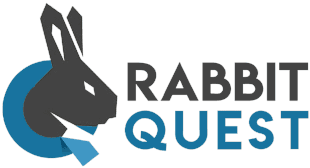How do you deal with a vociferous opponent of your vitality initiative? 🚨
Every HR manager knows the feeling: you have carefully and thoughtfully launched a vitality initiative that you really support, and you are in good spirits. But then the inevitable happens: there is that one employee who loudly resists. Not only to themselves, but also by pulling others in the team along in their doubts. What makes this extra difficult is that this is often a person who has an important social role within the team. Perhaps this employee is an unofficial leader, a friend or a role model for many. The vitality initiative, meant to bring positivity, risks being derailed by one source of loud resistance.
Time to read: 5 minutes
As an HR manager, this can be quite frustrating. You have put time, resources and maybe even a bit of passion into this initiative. And now you are faced with a dilemma: how do you maintain the positive energy of your vitality initiative, without repelling this employee or negatively affecting the rest of the team? In this article, you will discover how to deal with such a situation constructively and how to turn even a loud opponent into an ambassador.
Ears open, resistance gone! 👂💨
Resistance often starts with a sense of misunderstanding or fear of change. Employees, especially those with strong social influence, may feel threatened by a vitality initiative that introduces something new into their work routine. The first step you can take as an HR manager is to make time to really listen. What is behind it? Is it a matter of not seeing the value, or is there something else at play, such as personal vitality challenges?
A good example: you can schedule one-to-one meetings with the employee in question. In a quiet environment, without the pressure of colleagues, you can explore together what exactly is the source of the resistance. By viewing this conversation not as a confrontation, but as an opportunity to create mutual understanding, you give room for openness. This allows the employee to feel heard and you are able to better respond to concerns. Often, this already changes the dynamic.
Besides the one-to-one conversation, as an HR manager you can also consider organising anonymous feedback sessions, where the whole team can give input on the vitality initiative. This gives not only the noisy employee but also others a chance to voice any concerns without fear of repercussions. For example, you can send out a digital questionnaire where employees can share their views on what is preventing them from fully participating. By collecting this input and then discussing it in an open team meeting, you show that you are transparent and receptive to your employees' needs.
Turn your loudest critic into a superhero 🦸♀️
Resistance often comes from the feeling that something is being ‘thrown on top of you’ without a say. What if you consider the employee who offers resistance not as an opponent but as a partner in your vitality initiative? Sometimes it can help to give this person an active role. That way, you turn the energy that was negative at first into something positive. A great approach: invite the employee to become part of a working group that thinks about the initiative. For example, ask how he or she thinks the vitality initiative could be more in line with the needs of the team. By doing so, you give responsibility and show that you value everyone's opinion, including that of the person who was initially critical. This often causes a turnaround: from resistance to ownership.
Step by step from stress chicken to fanatic 💪
Sometimes resistance is simply a reaction to the idea that the vitality initiative is too overwhelming or being implemented too quickly. Employees who are used to a certain way of working may not feel comfortable with big changes. By making the transition to a more vital workplace step by step, you remove this fear of the unknown.
An example you can apply immediately as an HR manager: instead of immediately launching big programmes, start with a low-threshold pilot. Perhaps a small challenge where employees take a daily walk or try a healthier lunch. By keeping this first step small and accessible, you can slowly bring the employee who was initially reluctant into the process, without it immediately feeling like a big change. This can reduce their resistance and make them slowly open up to bigger initiatives.
Besides a pilot, as an HR manager you can set up a mentoring programme in which enthusiastic employees who are already actively participating in the vitality initiative act as personal coaches for others. These mentors can support and motivate their colleagues in an approachable way, without it feeling obligatory. For example, consider a colleague sharing his success with healthy eating by doing lunch preparations together with interested employees. In this way, you organically encourage participation in the initiative, without pressure or resistance.
From resistance to cooperation
The power of a vitality initiative lies not only in its practical implementation, but especially in the people working on it together. Even if you face loud opponents, as an HR manager you can create opportunities to turn resistance into cooperation. By listening, actively involving the employee and implementing changes step by step, you build a bridge between resistance and acceptance. And who knows, maybe that noisy opponent will become your greatest ambassador.
In essence, it's all about empathy and patience. Understanding that resistance often comes from personal feelings helps you as an HR manager not only to successfully implement the vitality initiative, but also to strengthen the cohesion and positive culture within the team. What starts as a challenge can thus end up as a wonderful joint project.
Another effective approach is to celebrate joint successes, however small, and make them visible to the whole team. For example, you can schedule a weekly moment where everyone participating in the vitality initiative can briefly share their progress. Let the critical employee participate in this too, but in an informal setting where performance is less important than commitment. This creates a positive group dynamic and shows that the initiative is about collective growth, not individual performance or pressure. This allows even the most sceptical employee to open up more.




